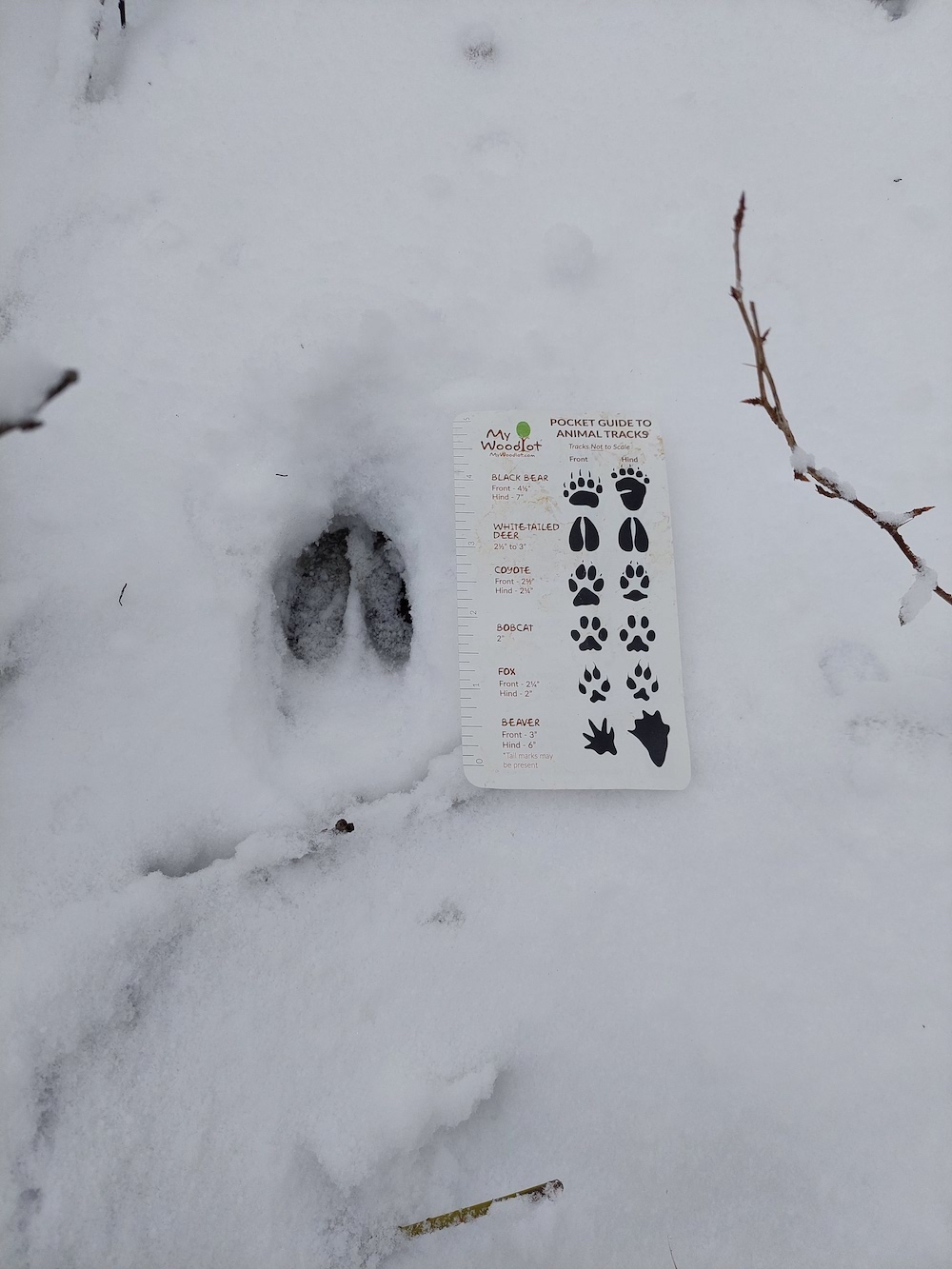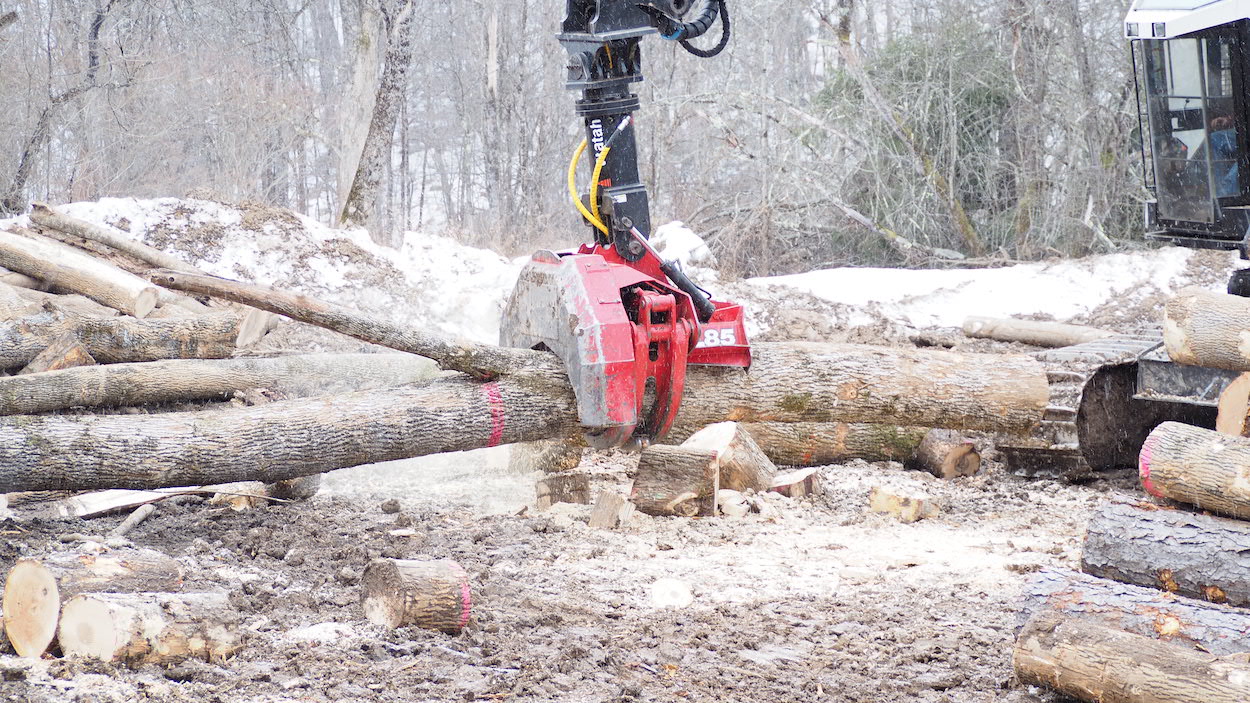Do you know a forestry best management practice (BMP) when you see one? This blog is a continuation of a previous one about a cut-to-length logging operation in Catskills.
This time, we focus on how the loggers prepared the harvest infrastructure (i.e., roads, trails, and landings) to control surface runoff and protect water quality at stream crossings. This important first step not only protects vital water resources, it also helps to ensure a more efficient operation.
Beginning at the landing, the WAC Forestry BMP program provided a free sample roll of geotextile and the loggers laid two layers of it down on the road surface where it meets the highway. Then, two loads of large stone were spread on top of the geotextile. The geotextile creates a layer of separation, helping to keep the large stone from mixing with the subgrade soil underneath. The gravel layer adds strength under loading from log trucks, it provides surface cover to prevent erosion, and helps to keep mud off the highway.
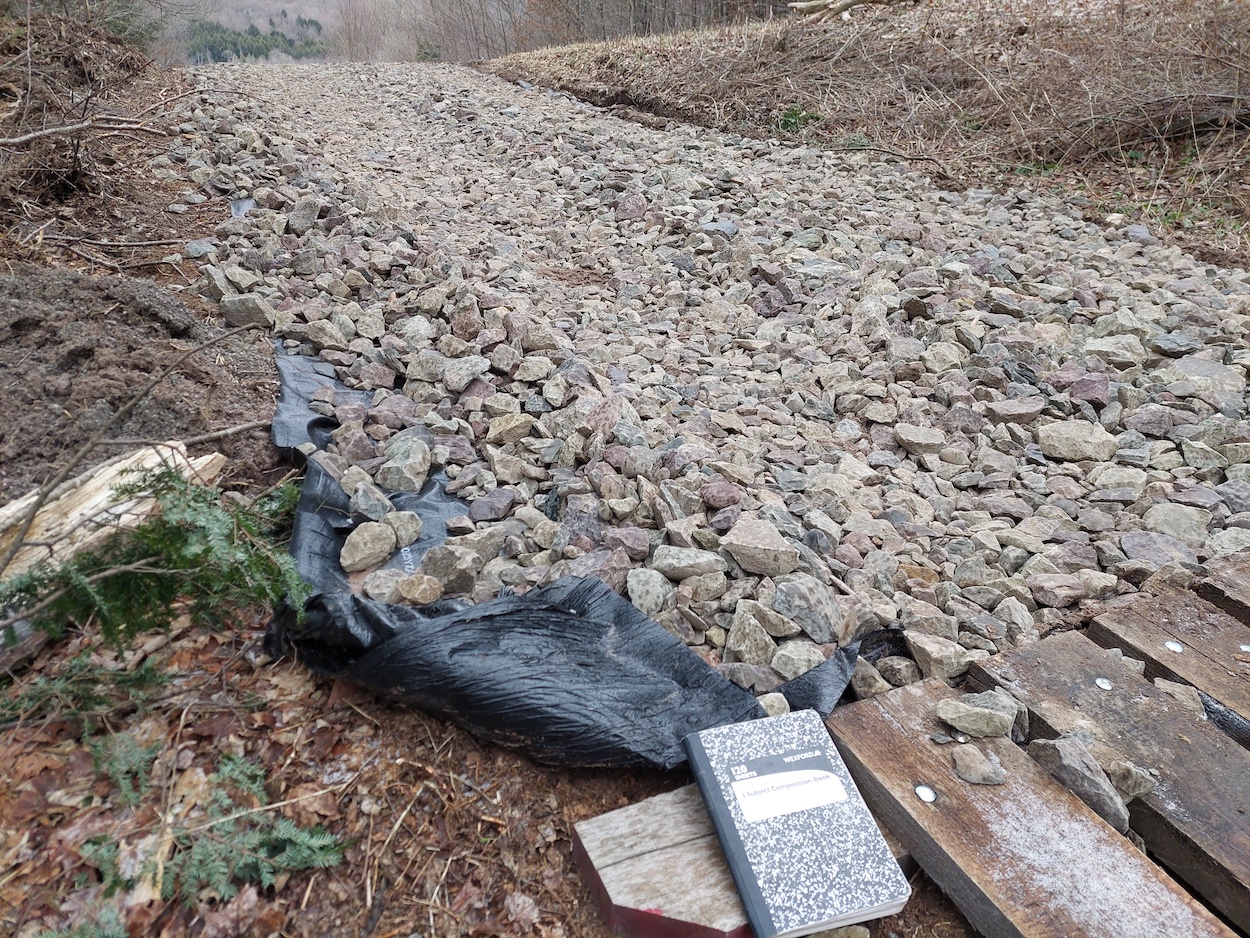
The mill provided 7 sets of landing mats and these were laid down on the landing area. They are re-usable and represent a reduced-cost option that provides the same benefits described above (i.e., stability under loading, reduced rutting and erosion).

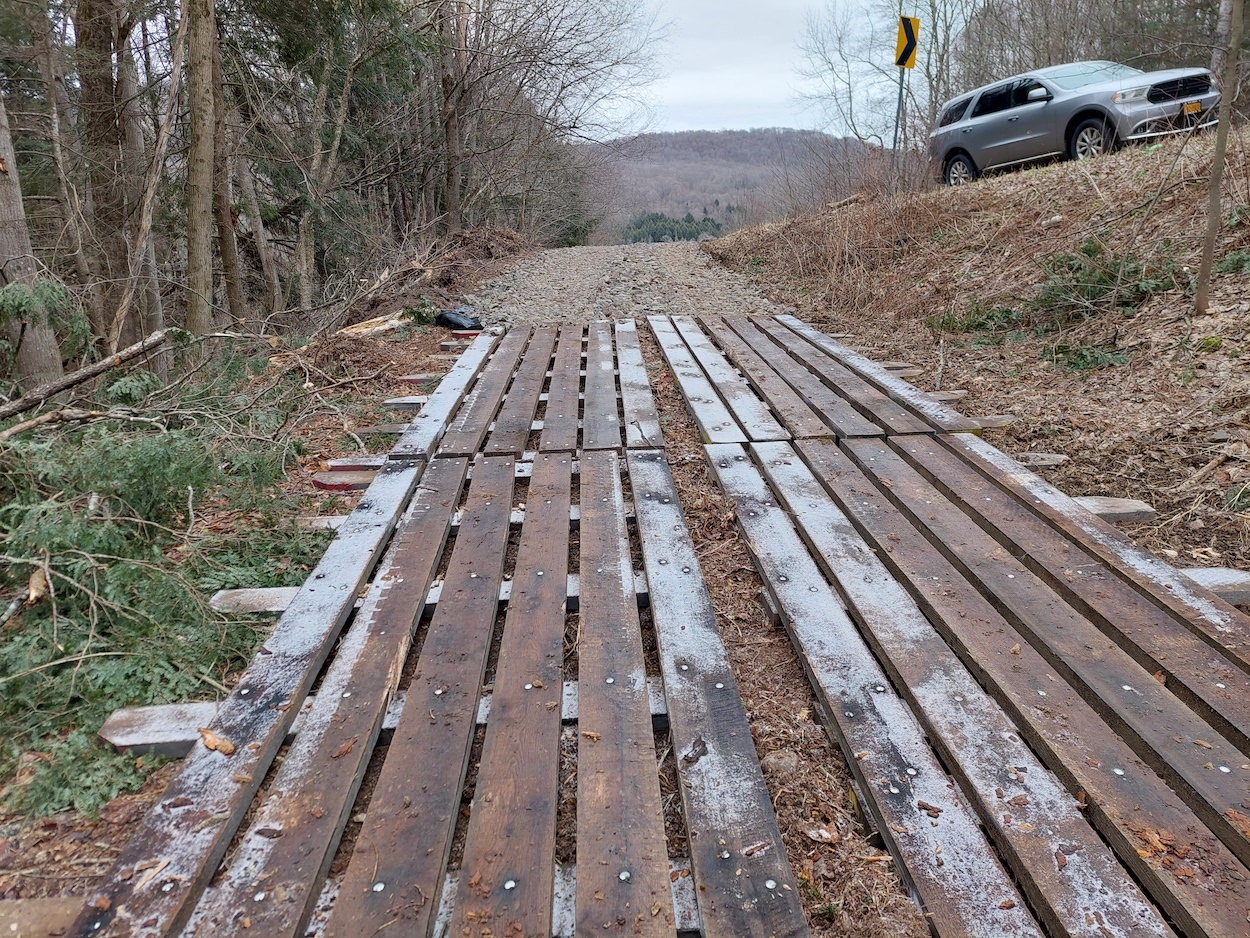
The loggers used two portable wooden bridge panels to cross a stream. Two corduroy logs were placed in the stream channel to elevate the panels above the stream and provide a smoother transition for the forwarder. The bridge panels kept logging machines (in this case, a feller-buncher, forwarder, and dozer) out of the stream channel, which reduced disturbance to the stream bed and banks. Plus, there was no chance of dragging cut stems through the stream channel as cut-to-length logs were hauled across the stream in the forwarder’s bunk.
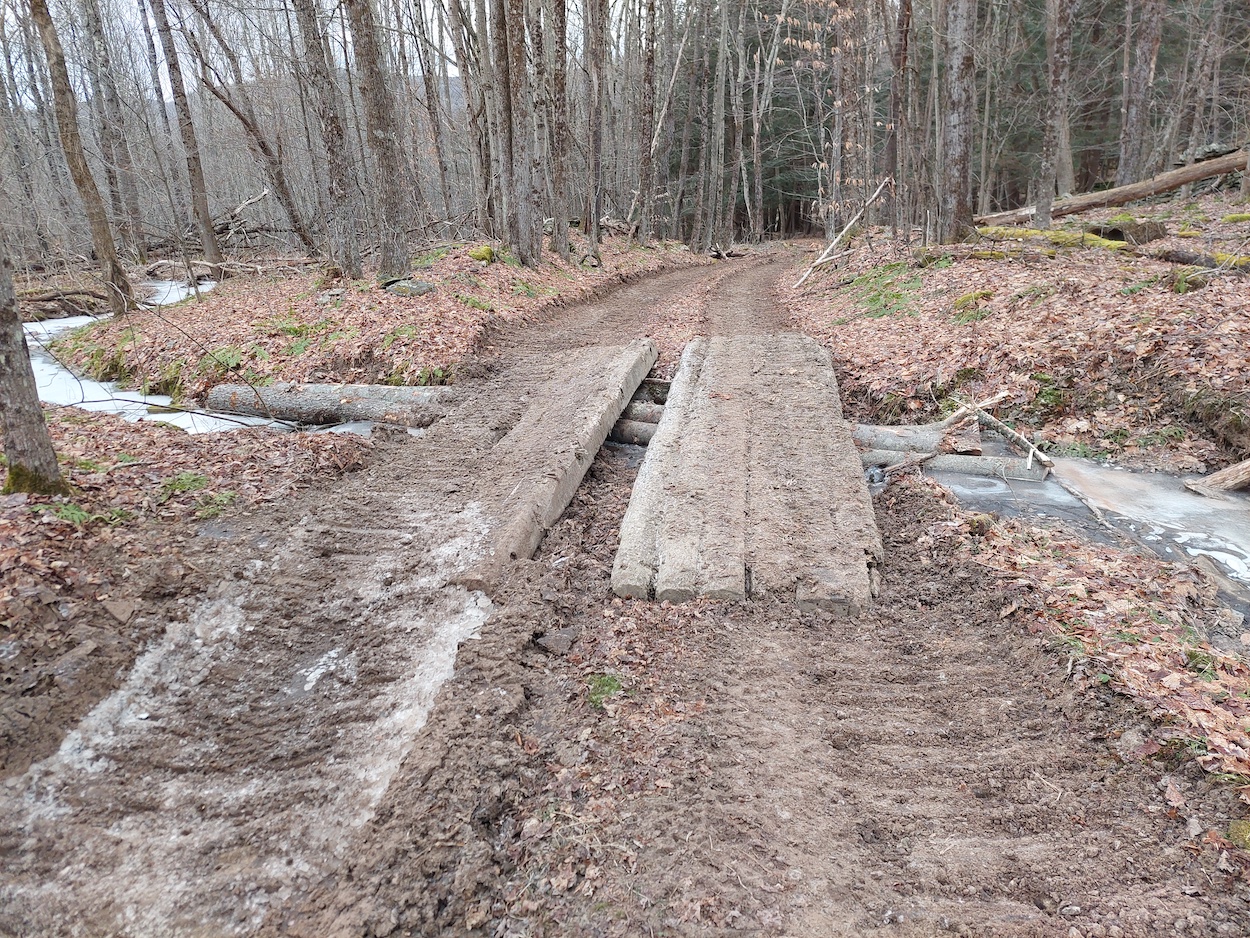
Further up the main trail, a water bar with log reinforcement (also known as a working water bar) was installed to move surface runoff off the trail. The logs helped to maintain the water bar’s integrity under repeated passes from the forwarder. Strategically placed, these working water bars reduce the volume and velocity of surface runoff. At stream crossings, they ensure that flow moves across the trail immediately, rather than running down the trail and gaining erosive potential.

Some sections of the trail were either sunken from historical traffic (this was an old town road) and/or they were designed to be through-cut sections of trail. Unfortunately, with the road surface being lower in elevation than the cut slopes on either side, water can only flow down the trail. Re-using legacy roads and trails can be seen as a water quality BMP as it reduces the amount of new trail construction, but it isn’t always ideal. In this case, the loggers installed water bars and crossings judiciously to move water off the trail.

A turnout reduces the ditch flow volume.

The outlet of the turnout and flow dispersal area beyond it.
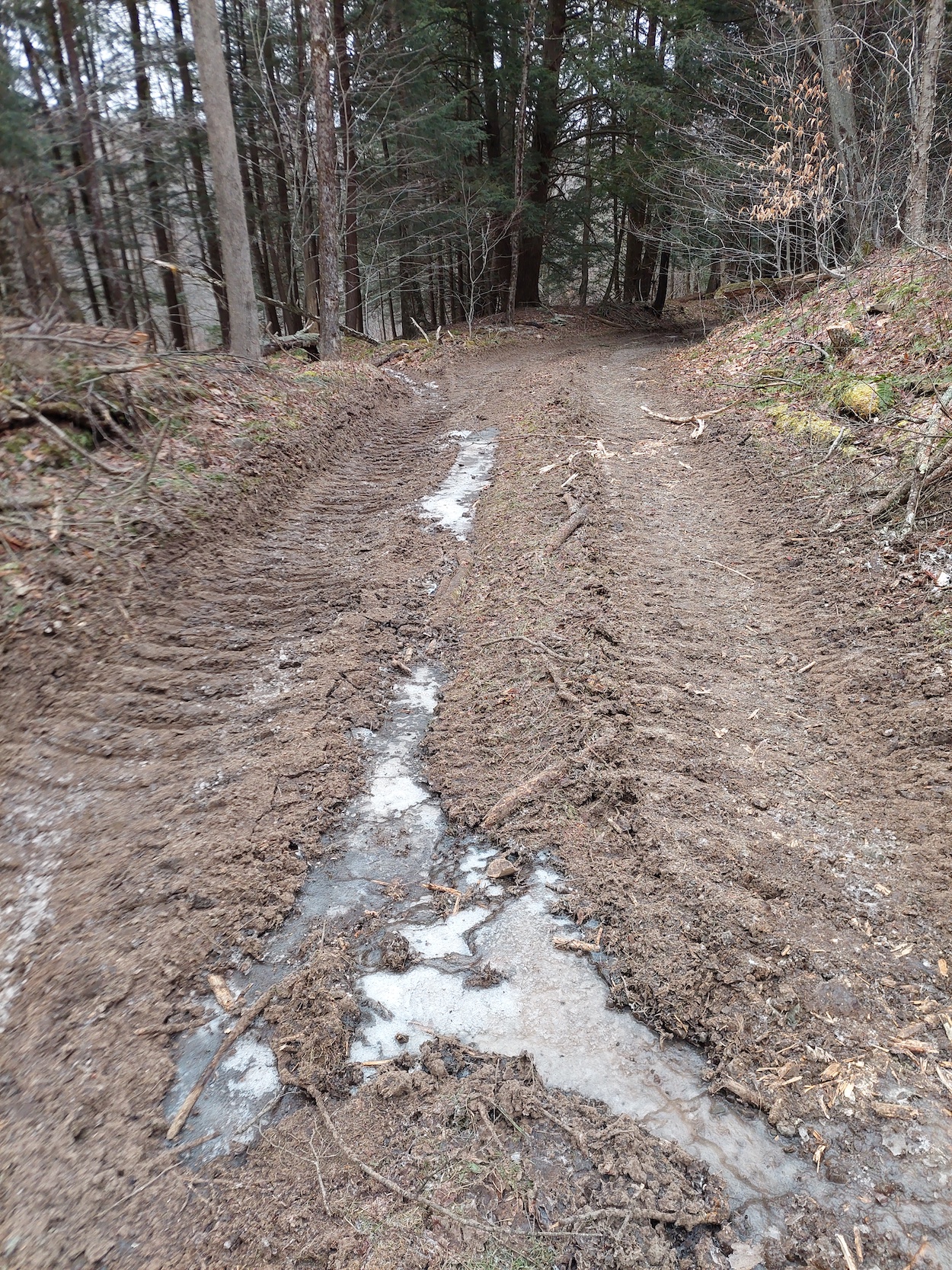
A turnout reduces flow volume from a trail rut.
Fortunately, the sunken road sections weren’t overly steep, long, or wet. This could result in severe rutting, which would be best addressed by closing the trail section and building a new one (called road re-location). In this case, it made sense to upgrade the trail with BMPs, rather than re-locate the trail. For example, at the nearest possible location below the sunken road section, the loggers installed a working water bar, along with bridge panels to protect the water bar/crossing.

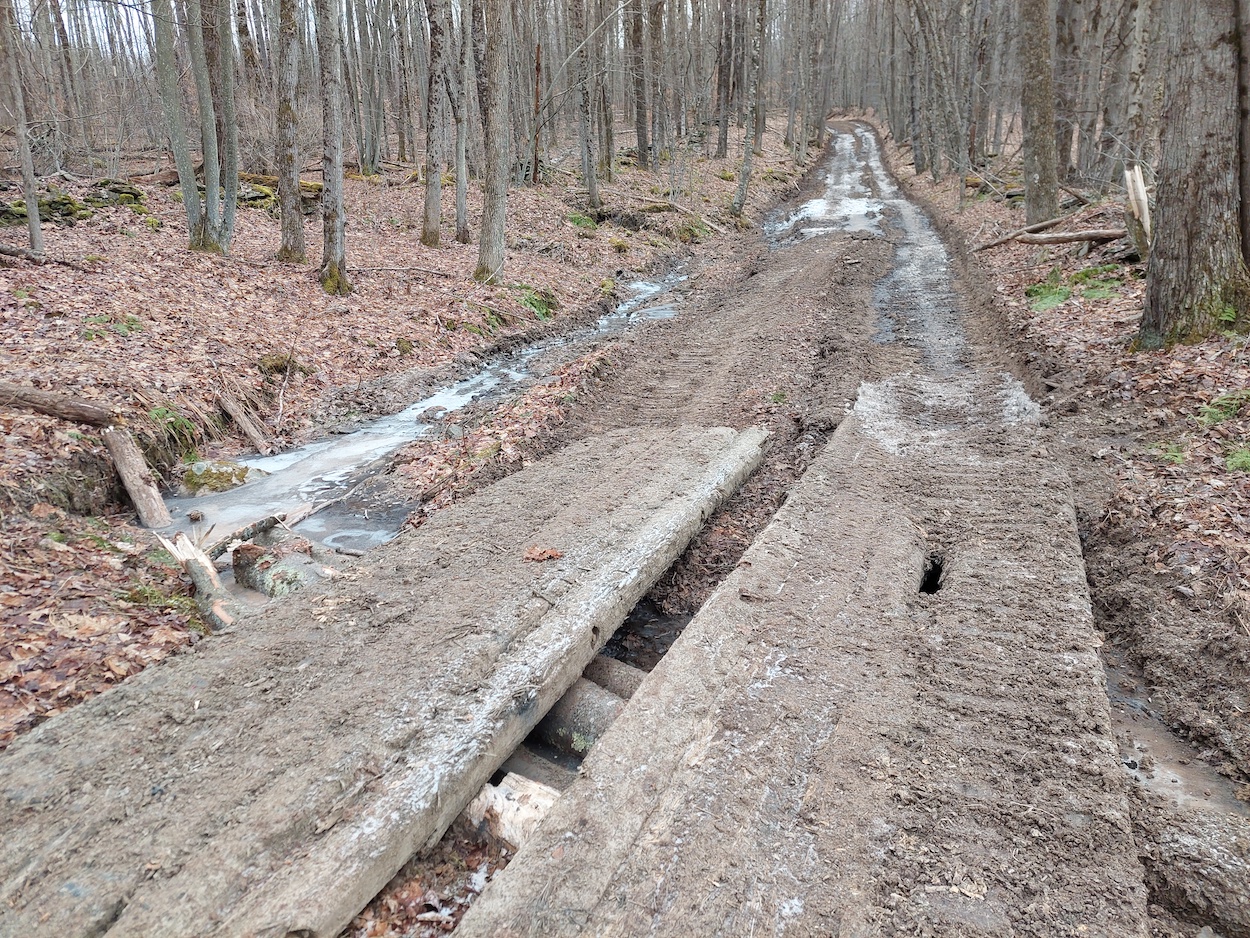
With appropriate BMPs installed, the loggers set themselves up for a more efficient operation. This means more time spent logging, instead of being forced to shut down because of muddy, rutted infrastructure. It also means less wear and tear on machines and less time re-grading trails at the end of the harvest.
Because this was a timber harvest in the New York City Watershed, the loggers applied for cost-share funds from the WAC Forestry Program to help offset the cost of implementing water quality BMPs during the harvest and at closeout. Since they were Trained Logger Certified (TLC), they received better cost-share rates for erosion control and stream crossing BMPs.
If you are a private landowner in the Watershed and planning to harvest timber, I encourage you to check out our BMP program. Your logger will receive financial and technical assistance to use BMPs, and if applicable, access to free samples of underutilized BMP materials like geotextile fabric, silt fence, or straw wattles. This helps to ensure a timber harvest that protects water quality.




